I was looking at a pin out for a 20 pin ATX power supply and noticed a -12V pin. I am now wondering; is this just a ground? If not, how does the PSU make a -12V supply rail?
-
9you _could_ consider -12v as gnd, gnd as +12, and 12v as +24; connecting +24 and +12 will read 12v... – dandavis Jul 23 '17 at 19:41
-
As an example demonstration, here's my favourite simple low-current voltage inverter for low currents: http://tinyurl.com/y9zhzejx - note this subtracts two diode drops from the voltage that gets inverted, and there's some more loss depending on the load and switching frequency. – user253751 Jul 23 '17 at 23:28
2 Answers
It is indeed a -12V rail. Frequently used in audio circuits and for RS-232 driver circuits. There used to also be a -5V rail used by ISA cards.
All a negative voltage is is a voltage rail which is at a lower potential than the 0V reference point we call ground. Remember that voltages are all relative - hence the name potential difference. For example if you have a 9V battery you could call the positive terminal ground and the negative terminal would now be -9V. It's entirely down to where you measure from.
There are loads of ways of making negative voltage rails including switched capacitor inverters, DC-DC converters amongst other ways. Mains AC alternates positive and negative, and consequently with two diodes and a couple of capacitors you can make a negative and positive voltage rail. Centre tapped or multiple secondary transformers can/are also be used for this purpose.
- 63,168
- 3
- 139
- 196
-
If i understand this right, you are saying is that if I switch the negative and positive poles I get -9v instead of +9v? – McMuffinDK Jul 23 '17 at 17:28
-
2@McMuffin effectively, yes. Hence devices tend to break if you plug them in backwards as the voltage ends up being the wrong polarity (negative rather than positive or vice versa). – Tom Carpenter Jul 23 '17 at 17:33
-
-
@McMuffin "What if i use a 230vac to 12vdc adapter, will it break?", what? Do you mean if you connect the 12V into the outlet? – Harry Svensson Jul 23 '17 at 18:06
-
@McMuffin, either way, as Tom pointed out. It depends on where you put your ground, aka your reference point. Your ZERO POTENTIAL. [This might help you understand](http://www.falstad.com/circuit/circuitjs.html?cct=$+1+0.000005+10.20027730826997+50+5+50%0Av+672+352+672+272+0+0+40+12+0+0+0.5%0Av+672+432+672+352+0+0+40+12+0+0+0.5%0Aw+672+352+608+352+0%0Ag+608+352+608+368+0%0Aw+672+432+736+432+2%0Aw+672+272+736+272+2%0A). – Harry Svensson Jul 23 '17 at 18:10
-
I mean if i plug the 230v end into the outlet and switch the poles on the 12v side – McMuffinDK Jul 23 '17 at 18:11
-
2@McMuffin it depends on the supply. If it is an isolated supply or your device is isolated from the 240V ground then yes you can simply swap a DC mains supply and get a negative voltage. If there is no isolation you can do it but you may short something out if there is another pass to ground. – Tom Carpenter Jul 23 '17 at 18:31
-
@TomCarpenter so if there is no connection to ground it is possible, right? – McMuffinDK Jul 23 '17 at 20:17
-
@TomCarpenter "-12V" rail in power supplies was mostly used for RS-232 a.k.a. "COM port". Since most motherboards from several years do not provide COM ports anymore some new PSUs do not provide "-12" and/or "-5V". – Todor Simeonov Jul 23 '17 at 20:20
-

simulate this circuit – Schematic created using CircuitLab
Figure 1. Power supply output stage.
In very simple terms the PSU switched mode transformer has multiple secondaries. The required output voltages are determined by the number of turns on each secondary.
You can see that coils 2 and 3 are wired oppositely and this is how the -12 V is generated.
It is possible that the 0V connections are joined internally (green link on Figure 1) so you need to be careful if using the power supply for purposes other than that for which it is designed.
- 168,990
- 12
- 186
- 385
-
6It's not just "possible" that the 0V connections are joined internally; it's _guaranteed_. The grounds on the ATX power connector aren't specific to particular power rails. – Jul 23 '17 at 20:28
-
Note that in practice, the transformer is usually only used to generate +12 and -12. The +5 and +3.3 lines are created by DC-DC conversion from the +12 line. – Mark Jul 23 '17 at 22:43
-
-
@Mark this is what modern mainboards do for their internal circuitry - 5V supply on drive connectors is another matter... – rackandboneman Jul 24 '17 at 05:42
